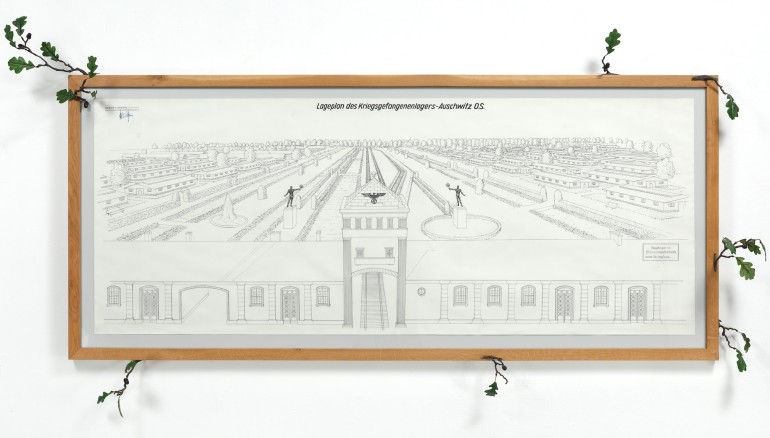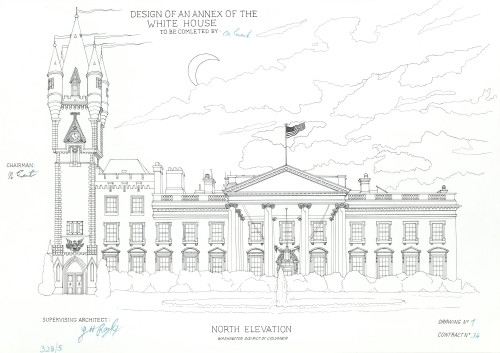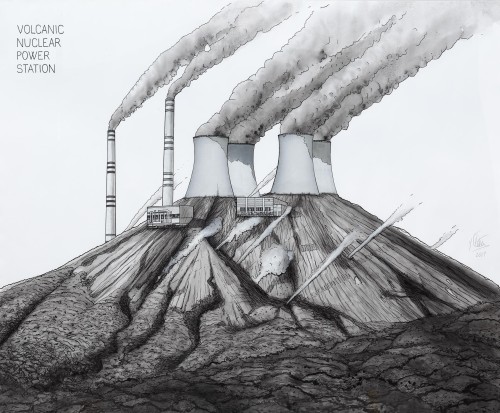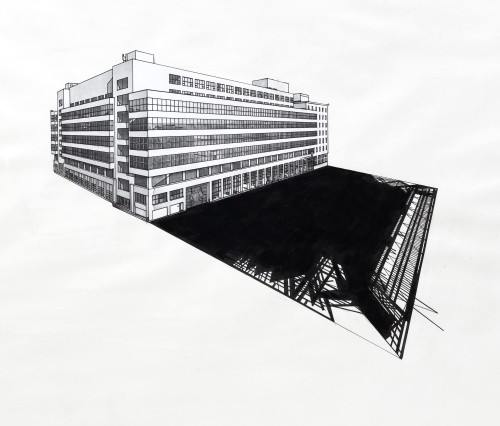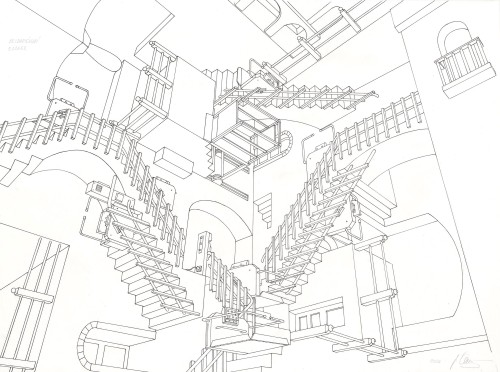Architectural Drawings and Plans.
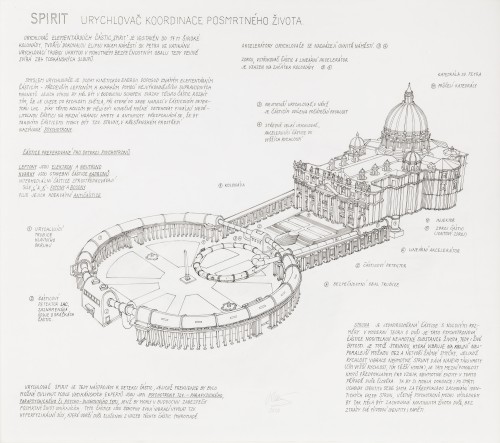
Spirit Project, a proposal for the addition of an afterlife coordination accelerator to St. Peter’s Basilica in the Vatican. 2020, 100 x 120 cm, ink on paper.
The Spirit elementary particle accelerator is built into a 17m wide colonnade, forming a perfect ellipse around St. Peter’s Square in the Vatican. The accelerator tube, concealed in a massive safety casing, is held firmly in place by 284 Tuscan columns.
The boosters of the accelerator are placed in the middle of the square.
The source, the particle injector and the linear accelerator are placed at the entrance to the colonnade.
The purpose of the accelerator is to deliver kinetic energy to the currently identified elementary particles – mainly leptons and quarks – using the most powerful superconducting magnets. In the future, their power should break up bunches of these particles by bringing them to the speed of light at which they collide in the LHC particle detector. With these collisions, it should be possible to detect the final indivisible particle at the boundary between matter and antimatter. It is thought that such a particle could be the strings called psychotrons in Christian circles.
Particles preferred for the detection of psychotrons.
Leptons are the electron and the neutrino.
Quarks are the building blocks of hadrons.
Force-carrying particles mediate the L and K forces – photon, boson
Plus the corresponding antiparticles
A string is a one-dimensional extended entity. In the modern theory of the soul, this psychotronic particle is the carrier of the immaterial substance of life, i.e., of the living being. It is in fact a string that vibrates at the slowest and lowest possible frequency and forms no loops. Since the speed of vibration of an immaterial string is connected with the weight of matter (the higher the speed, the heavier the matter), this terminal slowness of vibration is a prerequisite for the formation of an immaterial entity, in this case the soul of man. It could retain its own identity even after death, provided the identical string connections, including the psychotrons of the brain, are preserved. The result should be a continuity of the soul’s life without loss of its original identity and memory.
The Spirit accelerator is therefore a tool to detect particles whose frequencies could be influenced. According to Vatican experts, these are psychotrons of the para-physical, para-psychological or psycho-spiritual type, which in the future could secure the afterlife of the faithful. These particles are capable of generating hyperphysical forces through their vibration, which will hold together the soul composed of the bonds of these particles.

Plan for the reconstruction of the Acropolis of Athens according to Albert Speer. 2019, 144 x 110 cm. ink on paper
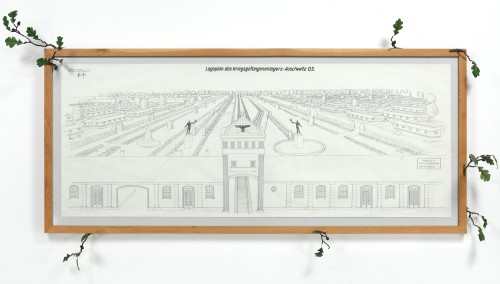
Plan for the Reconstruction of the Auschwitz Concentration Camp into a Picturesque, Typically Germanic Village According to Albert Speer, 2019, 198 x 77 cm, ink on paper.
Volcanic Nuclear Power Station, 2021, 140 x 110 cm, ink on paper
The National Gallery Casts a Shadow on the Centre Pompidou, 2019, 60 x 80 cm, crayon and ink on paper.
Barrier-free Escher, 2021, 75 x 90 cm, ink on paper.
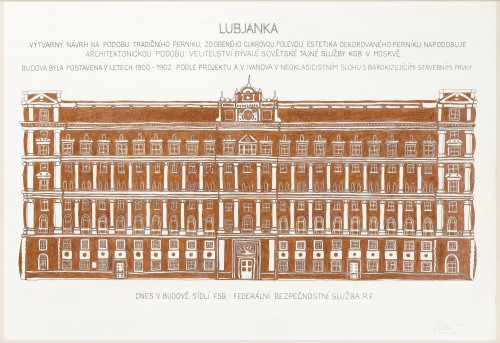
Lubyanka from gingerbread – design for gingerbread with sugar icing based on the architectural form of the KGB headquarters in Moscow, 2020, 107 x 74 cm, ink and crayon on paper.
An artistic design for a traditional gingerbread house decorated with egg white icing. The aesthetics of the decorated gingerbread imitates the architectural form of the headquarters of the KGB, the former Soviet Union’s secret intelligence agency, in Moscow.
The building was constructed in the years 1900–1902 after the design by A. V. Ivanov in Neoclassical style with Baroque architectural elements.
Today the building houses the FSB – the Federal Security Service of the Russian Federation.
